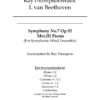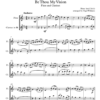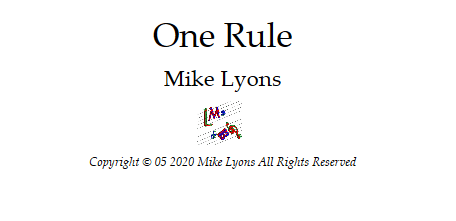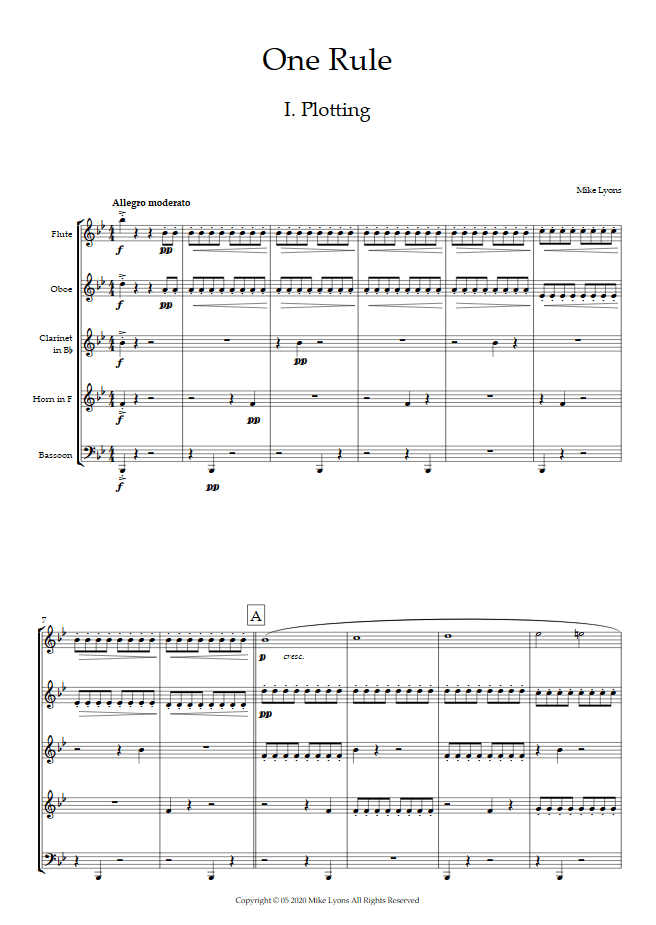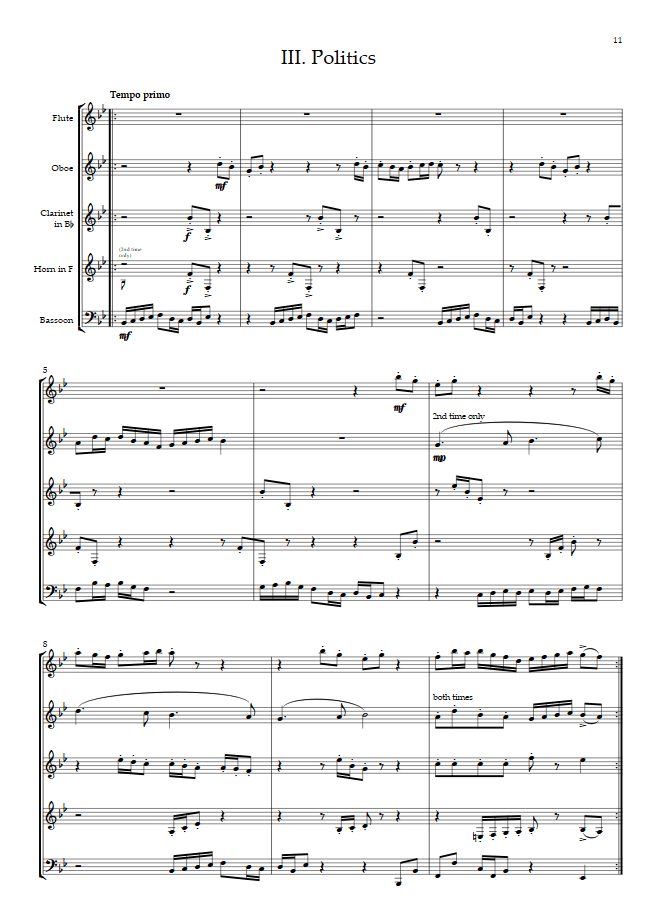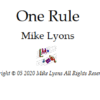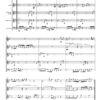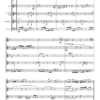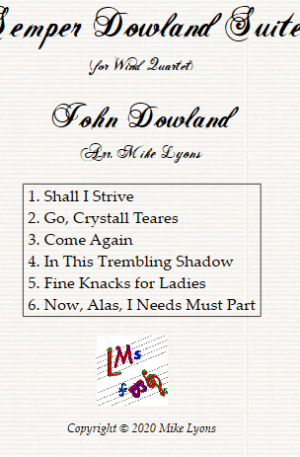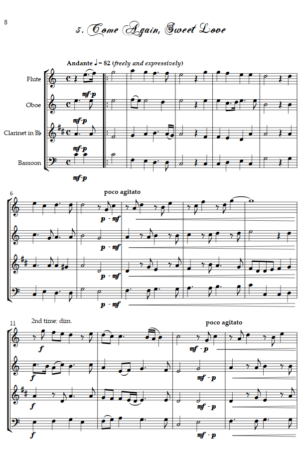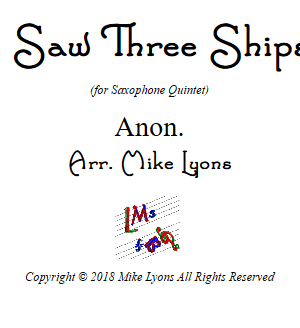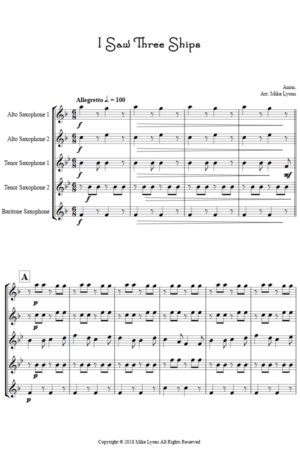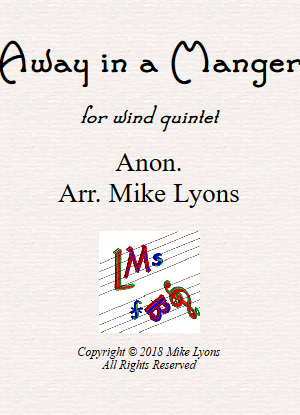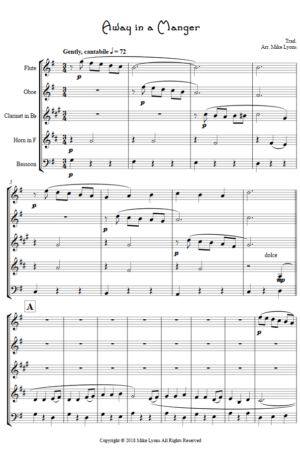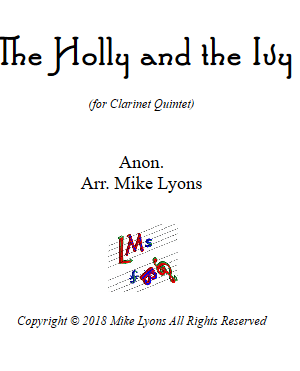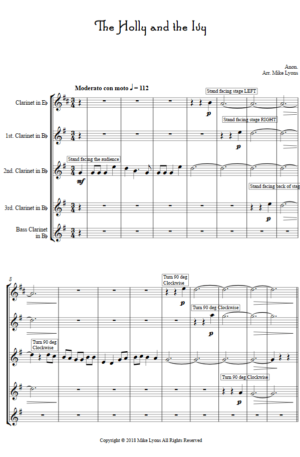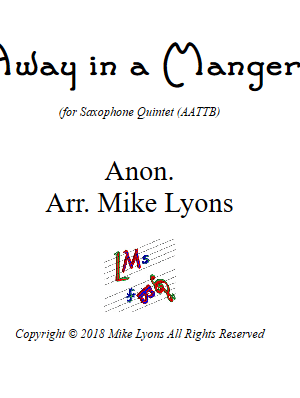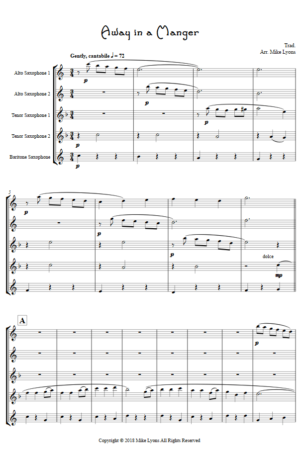No products in the cart.
Description
This brand-new piece for wind quintet came about through the coronavirus
lockdown and my observations of our UK politicians and how they behaved (One
rule for them…)
In terms of the music, each line is related to other lines through patterns
of 5, 7 or 9 beats (or half beats). Each repetition of the pattern starts with
all the instruments in that particular group playing on the first beat. As the
music progresses and develops, motifs appear out of the combinations of these
beats with each other. Gradually, these patterns and motifs develop melodies
which then form the backbone of the piece.
The first section (I hesitate to use the term movement) labelled
“Plotting” develops a character of wiliness. It represents, in its
twisting strands, the plotting of politicians to aggrandise themselves. The
bottom 3 parts form an ‘undercurrent’ to the music as the 5,7 and 9 beat counts
overlap and process. The flute and oboe, meanwhile, generate the first melodic
strand – which becomes important in the later movements. The opening quaver
patterns are passed around the whole ensemble, keeping the rhythmic pulse
going. It slips between the anchoring notes of the lower 3 parts, as well as
being essential to the development of the flute and oboe melodic material and
stopping the bassoon part being too boring!
The long winding, rising and falling line on the oboe and flute is
deliberately ambiguous in its tonality, leading one to feel it strives upwards,
but then loses its way. The frequent dissonances as this line crosses itself in
the other parts represents the effect of all the plotting on ordinary people.
Before letter B, there are a couple of brief hints of Dies Irae, but I didn’t
want that idea to dominate too much. After B and into C, we get the day-to-day
chitchat in Westminster, with interjections from many voices proclaiming their
message, trying to persuade their colleagues and just leading to confusion and
tonal extremism. From letter C to the end of the section is an extended accel/stretto
as the discussion gets more heated.
Section 2 is titled “Scheming”. The tempo is faster than the
previous section, but the pace is slower. More motives have formed and
developed organically out of the rhythm and pitch patterns. The 5/7/9 cross
rhythms are now at double speed, giving a fiercer drive to the music. The
bassoon and horn, for now, adhere to the longer pulse of the first section,
providing something of a harmonic underpinning. At bar 101, the long but now
slightly broken narrative line of the first movement returns in modified form.
This now provides a backdrop for the rhythmic bartering and ‘back and forth’ of
the political day. The section reaches a climax as the political bickering
becomes rowdier.
Section 3 begins in a relatively happy mood. The bassoon has a jolly
capering little motif, later taken up by other members of the ensemble. There
are hints of English folk tune-ness in the resulting conversation, perhaps
emphasised by the overlays of this pleasant melody from letter D.
Letter E is a ‘turning point’ as all the rhythmic pulses finally align
again. This is the first time all five parts have played on the same beat since
the opening. At Letter G, a pulsing drone is added to the mix, using the quaver
version of the pulse. Perhaps representing the soring of politicians. There is
a parallel drone added at letter H, these drones use the 5 (bassoon) and 7
(horn) beat pulses. The result is a solid underpinning of the rhythmic and
melodic ideas in the upper 3 parts.
After letter I comes a reprise of the spritely bassoon motif with dissonant
harmonies as the discussion becomes more heated. The little semiquaver figures
have the rhythm “Mr. Speaker” as members of the house shout for attention. In
the repeat bars, we hear the Speaker shout “Order!”
Letter J provides an altered reprise of the beginning, with parts swapped
round to give the oboe a shot at the tune. We are in a new tonal centre
(perhaps there’s been an election?) After a reprise of the lyrical melody at
letter K, we move into the end phase, with the repeated patterns regaining dominance.
The work ends with a three quaver ‘clapping of the hands’.

